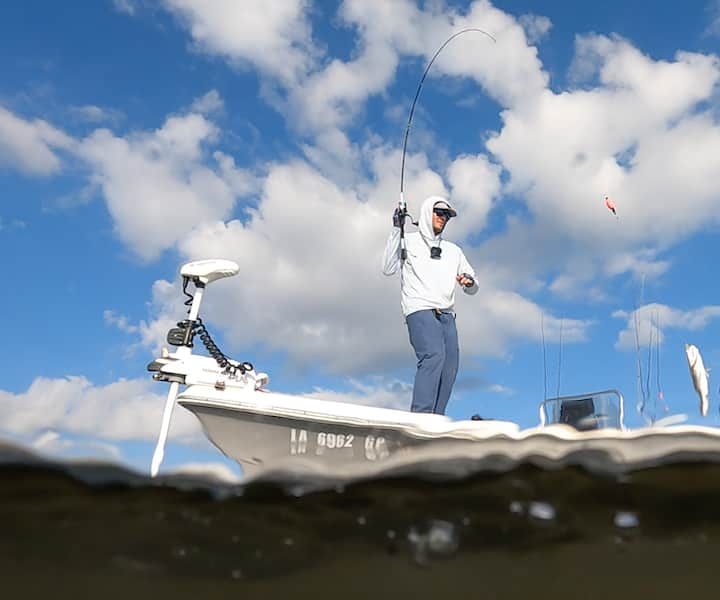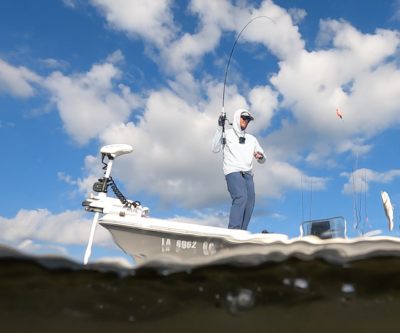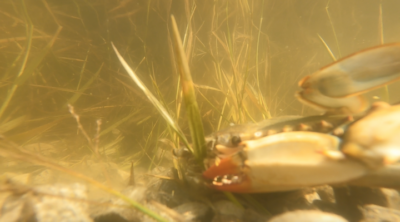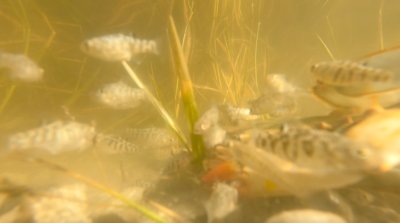Storm Minnows: The Key to Catching More Fish in the Marsh
Keith Lusher 10.16.23

For those saltwater anglers who target the marshes along the East Coast and the Gulf South, the cold fronts that are beginning to blow through provide a great opportunity to take advantage of a phenomenon that only takes place for a few days each year.
Jack Donaldson of Biloxi, MS. fishes the marshes year-round but said his favorite time to fish is in the fall when the speckled trout start feeding on what he calls Storm Minnows. Other known as Sheepshead Minnows, these small fish are masters of using marsh grass and mud to stay out of the crosshairs of speckled trout, redfish, and flounder.
The sheepshead minnow with a scientific name of Cyprinodon Variegatus, is a species of small fish found in coastal waters along the East Coast and Gulf Coast states. The fish is relatively small compared to other marsh-dwelling minnows averaging 1-2 inches in size. They have a slender, elongated body with a slightly compressed shape. Their body tapers toward the tail, giving them a streamlined appearance. Sheepshead minnows display sexual dimorphism, meaning males and females have different coloration. Males often have a more vibrant and colorful appearance with bright vertical bars of orange or blue on their sides. However, females are usually less colorful, with a grayish appearance. One distinctive feature of sheepshead minnows is their dorsal fin, which has a series of spines at the front, followed by soft rays and a forked tail fin.
The minnow is also called a storm minnow. Donaldson said the name fits it well as these fish are the most vulnerable when storms blow through. “A good strong cold front is what it takes to wash these fish out of their secure homes in the marsh grass,” Donaldson said. “If you find the right run-out in the marsh where these fish are forced out, you can load the boat with fish.”

Donaldson recently made a trip where he caught 15 speckled trout, 3 redfish, and 2 flounder in the same spot. “It was a small trenasse (ditch) that drained out from the marsh. A cold front was passing through and the pressure was dropping big time. I noticed a lot of surface action with minnows being chased on the surface,” Donaldson said. The 65-year-old started casting a cork with a storm minnow rigged about two feet underneath. “The cork barely hit the water and I saw that little storm minnow skip across the water and a speck blew it up,’ he said. Donaldson was able to catch 20 fish within two hours but his trip was cut short due to the cold front that was passing through.
How to Catch Sheepshead Minnows
There are three things to remember when trying to catch storm minnows.
- They are just about impossible to catch by throwing a cast net.
- They are never found in water over a foot deep unless washed out by a storm.
- The best bait to catch them is a cracked crab.

Since these minnows stay hidden in the marsh grass they can be awfully difficult to catch. Donaldson recommends using a minnow trap with a cracked crab as bait. “Oh they love cracked crab,” he said. Donaldson straps a rubber band through the middle of the trap to hold the cracked crab in the center. This forces the storm minnows to travel through the holes in the trap in order to start pecking the crab. Donaldson has a unique technique in which he sets the trap. “I like to check Google Earth for an overhead view of some potholes in the marsh. Some are located in spots that you would never know they were there,” he said. After locating a pothole in the marsh he put his boats on and walked to the opening. “the smaller the opening in the marsh the better,” he said. Donaldson recommends just enough water to cover the holes in the minnow trap. After setting the trap all that’s needed is an hour or so. “These fish are ruthless. They can smell that crab in the water and get into that trap within minutes,” he said.

Storm Minnow Setup
When using storm minnows for bait Donaldson a #3 circle hook rigged about 2-3 feet under a popping cork. In between the cork and the hook, he clamps on a slit-shot. “That split-shot holds the minnow underwater if a fish starts chasing it,” Donaldson said. For fishing line, he prefers 10-pound monofilament.
While these minnows are forced out of the marsh the fishing should be fantastic this year. Donaldson said there’s no better time to get into the marsh and start targeting small drains that spill out from the grass. But the bite won’t last long! As soon as winter arrives these fish hunker down deep in the marsh where there are deep potholes that render them virtually unreachable.

